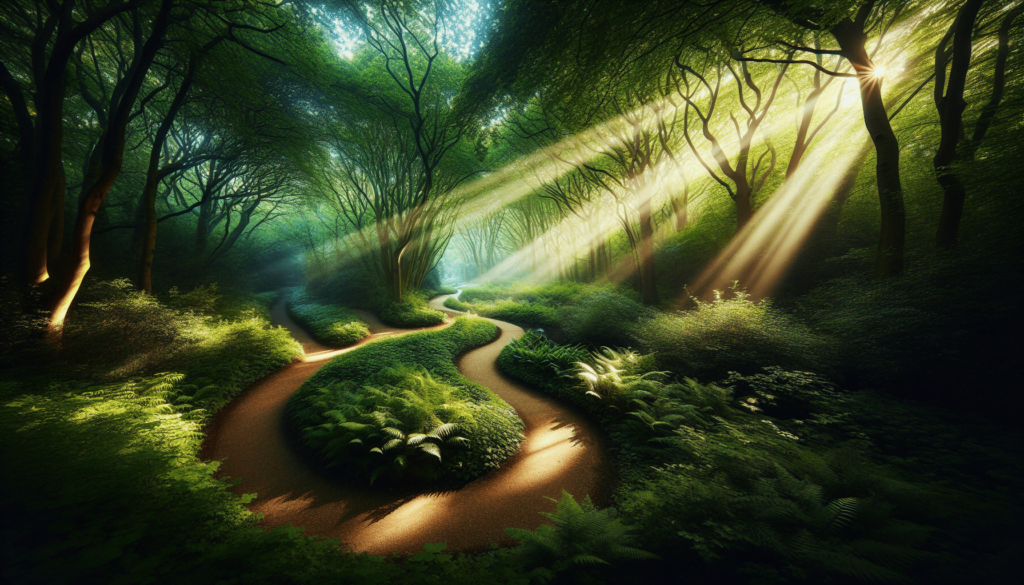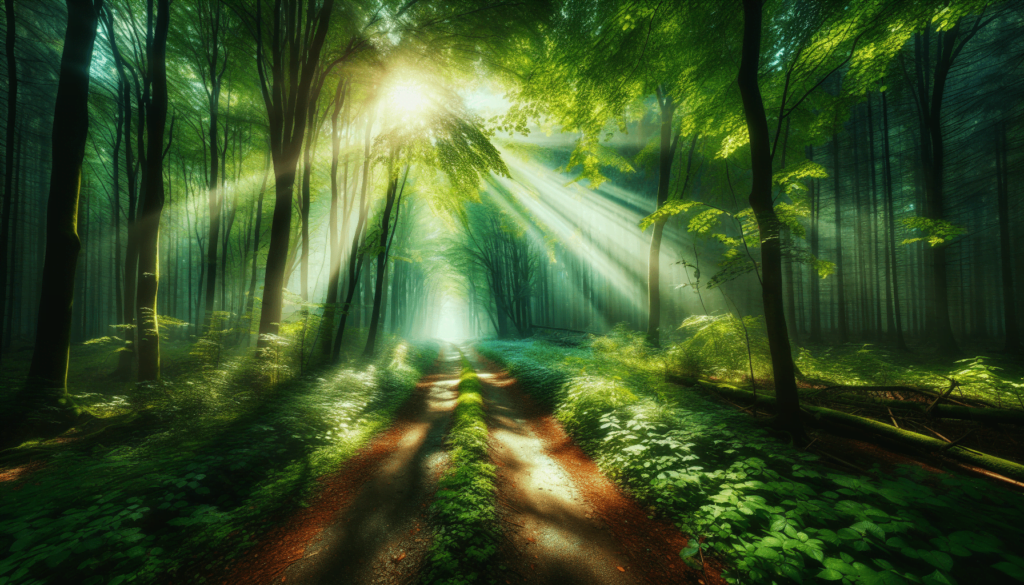In the heart of bustling London, hidden countryside trails offer an unexpected and serene escape from the urban environment. By meandering through these trails, visitors and locals alike can experience the city’s verdant beauty, often overlooked amidst the more prominent cultural landmarks and attractions. These trails, rich with historical significance and lush natural surroundings, provide a perfect blend of peaceful retreat and rural charm. As urbanization continues to encroach upon natural landscapes, discovering and preserving such trails becomes increasingly relevant for both recreational purposes and ecological balance. This article will explore the unique charm, historical background, and modern significance of London’s countryside trails, illustrating why they remain treasured havens in the city’s dynamic expanse.
Table of Contents
Explore hidden countryside trails for London

This image is property of images.pexels.com.
Have You Experienced London’s Countryside Gem?
When thinking of London, most envision bustling city streets, iconic landmarks, and grandeur historical sites. But would you be surprised to learn that London also boasts some hidden countryside trails teeming with natural beauty and tranquility?
Overview
London’s hidden countryside trails offer a delightful respite from urban life, providing an unexpected oasis of greenery, fresh air, and scenic landscapes. These trails present the perfect opportunity for both locals and tourists to immerse themselves in nature without straying too far from the convenience of the city.
Thesis Statement
This article aims to showcase London’s hidden countryside trails, revealing their historical significance, current trends in their usage, and the variety of experiences they offer. Through detailed exploration, readers will gain a comprehensive understanding of these trails and be inspired to explore these tranquil retreats.
Historical Context
London’s countryside trails are not only natural havens but also pathways steeped in history. Many of these routes date back centuries, used by merchants, travelers, and even royalty. For instance, the Green Chain Walk, which runs through South East London, was once frequented by market traders and pilgrims. The Capital Ring, another well-known trail, provides a historical narrative connecting London’s outer neighborhoods. When walking these paths, one can witness remnants of London’s vivid past blended seamlessly with the present.
The Green Chain Walk
The Green Chain Walk, established in the 1970s, connects various green spaces across South East London. This trail is a testament to the city’s effort to preserve natural corridors amidst urban sprawl. Walking along it, one encounters ancient woodlands, historic parks, and evidence of human settlement dating back to Roman times.
The Capital Ring
The Capital Ring serves as a circular footpath around the city’s outer limits. This 78-mile-long trail passes through suburban neighborhoods, historic landmarks, and nature reserves. It stands as a celebrations of London’s commitment to conserving green public spaces, provided for the enjoyment and education of residents and visitors alike.

This image is property of images.pexels.com.
Current Trends
Interest in London’s countryside trails has surged in recent years. The COVID-19 pandemic prompted a re-evaluation of leisure activities, with many seeking nature-based escapes that offer social distancing benefits. This period marked a significant rise in the exploration of local trails and parks. According to a report by Natural England, 74% of adults stated in 2021 that nature was more important to them during the pandemic. For urban inhabitants, these trails provide a necessary connection to nature, aiding mental well-being and physical health.
Key Concepts and Definitions
Countryside Trails
Countryside trails in London refer to footpaths and walking routes that traverse the city’s green belts, parks, and natural reserves. These trails often avoid urban settings, focusing instead on more rural or semi-rural areas.
Green Spaces
Green spaces are areas of vegetated land within an urban environment. They include parks, gardens, and trails that offer residents recreational spaces and preserve ecological diversity within the city.

This image is property of images.pexels.com.
Detailed Exploration
London’s hidden countryside trails can be broken down into various segments, each offering a unique experience. Below are some of the most notable trails, which combine natural beauty and historical depth, ensuring a rich and varied exploration.
Hampstead Heath
Hampstead Heath is a sprawling green space covering some 790 acres. Known for its varied terrain, it offers woodlands, meadows, and even swimming ponds. The Heath is interlaced with numerous trails, perfect for both seasoned hikers and casual walkers. Historical features, such as Kenwood House, add cultural significance to your journey.
The Parkland Walk
The Parkland Walk follows the old railway line between Finsbury Park and Alexandra Palace. Spanning 4.5 miles, this trail is a favorite among joggers, cyclists, and leisurely walkers. It’s a local wildlife corridor, providing sightings of various bird species and wildflowers. This route offers a sense of secluded wilderness, juxtaposed against city backdrops.
Richmond Park
Richmond Park is the largest of London’s Royal Parks, offering around 2,500 acres of grassland, ancient woodlands, and stunning views. Popular trails include the Tamsin Trail, a 7.2-mile circular route around the park’s perimeter. Visitors can often spot the park’s free-roaming deer, adding an extra allure to hiking here.
The Thames Path
The Thames Path is a long-distance trail that follows England’s most famous river from source to sea. In London, the path meanders past iconic landmarks like the Houses of Parliament, continuing outwards where it boasts tranquil riverside scenery. The urban-to-rural contrast offers a versatile hiking experience.
Example 1: The North Downs Way
The North Downs Way is a part of London’s greater countryside trail network, stretching from Farnham to Dover. However, the trail reaches into the southern boroughs of Greater London, offering trekkers a countryside experience without venturing too far from the metropolis.
Historical Significance
The North Downs Way runs parallel to ancient pilgrim routes, with sections overlapping the historic Pilgrims’ Way. This route has been used for centuries, initially by traders and later by pilgrims journeying to Canterbury.
Impact on Local Communities
Revival and maintenance of the North Downs Way have bolstered local tourism, promoting sustainable travel and preserving historical landmarks along the route.

Example 2: The London LOOP (London Outer Orbital Path)
The London LOOP is another celebrated trail, encircling the outer edges of Greater London. Spanning roughly 150 miles, it offers a countryside experience with distant city vistas.
Urban to Rural Transition
The London LOOP guides hikers through the city’s suburban fringes into more spacious and verdant rural areas, embodying the transition from urban life to the tranquility of the countryside.
Biodiversity
The trail traverses varied landscapes, from serene woodlands and riverbanks to open fields, contributing to rich biodiversity. It’s an ideal route for nature enthusiasts interested in bird watching and local flora.
Comparison of Different Perspectives
Natural Escape
For many, London’s countryside trails symbolize an escape from urban stress. These trails provide a quiet, natural environment that fosters relaxation and health benefits.
Heritage Trails
Others appreciate these routes for their historical and cultural significance. Trails like the Green Chain Walk and the Capital Ring integrate historical landmarks and pathways, providing a sense of connection to London’s rich past.

Impact Assessment
Health and Well-being
Regular use of countryside trails has shown positive impacts on physical health and mental well-being. Studies indicate that spent time in nature reduces stress, improves mood, and enhances overall health.
Environmental Education
These trails also serve educational purposes. Schools and community groups often utilize them for learning about local ecology, history, and conservation efforts.
Preservation Efforts
Increased public interest has spurred efforts to maintain and preserve these trails. Local councils and volunteers work together to ensure pathways remain open and accessible, creating a community-driven approach to conservation.
Future Directions and Implications
Predictions
With the growing awareness of environmental sustainability and urban pressures, the popularity of London’s countryside trails is expected to rise. Future initiatives may focus on further integrating green spaces within city planning, ensuring these natural escapes remain preserved and accessible.
Technological Integration
Modern technology can play a role in enhancing trail experiences. Including augmented reality for educational tours, social media for awareness, and apps for trail guidance can all improve user engagement.
Implications
Societal Impact
As urban societies grow more conscious of the need for sustainable living and mental well-being, city planners might prioritize green spaces and countryside trails in future developments. These spaces could become central to urban living, fostering a balanced lifestyle.
Conservation and Sustainability
Greater utilization of these trails emphasizes the need for ongoing conservation efforts. Environmentally sustainable practices must be implemented to preserve these natural gems for future generations. Collaboration between government bodies and local communities will be crucial.
Conclusion
Recap
In summary, London’s hidden countryside trails provide invaluable recreational spaces within an urban environment. Trails like Hampstead Heath, the Parkland Walk, Richmond Park, and the Thames Path draw on both natural beauty and rich historical contexts. Not only do they offer health benefits and educational opportunities, but they also support conservation efforts through increased public interest.
Final Thought
Next time you find yourself amid London’s hustle and bustle, consider venturing out to explore these hidden countryside trails. Could it be that the best way to experience London isn’t only through its landmarks but through its green spaces as well?
Engagement
Have you walked any of these trails? Share your experiences and favorite routes in the comments below! And don’t forget to explore more about London’s countryside trails – there’s always a new path waiting to be discovered.
Credible Sources
- Natural England. “People and Nature Survey for England: Monthly Indicators for March 2021.” Natural England, 2021.
- London Parks & Gardens Trust. “Green Chain Walk.”
- Greater London National Park City Initiative. “London National Park City.”
- Historic England. “Historic Trails of London.”
- Transport for London. “Capital Ring Walk.”
By leveraging these hidden countryside trails, one can appreciate London in a whole new light – blending the vibrancy of the city with the serenity of nature.
Exploring London’s Vibrant Supper Club Scene: A Unique Alternative to Traditional Restaurants
